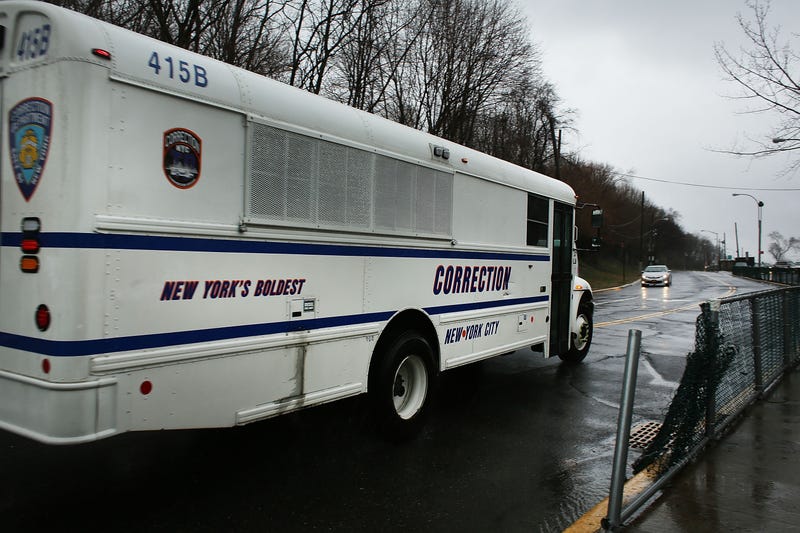
NEW YORK (1010 WINS) — A new piece of legislation would establish jail population review teams that would seek to resolve the cases of prisoners who could be safely released with the intention of lowering the number of incarcerated people in the New York City's jail system.
City Councilmember Carlina Rivera, Councilmember Shahana Hanif and Council Speaker Adrienne Adams intend to introduce the legislation on Thursday.
If passed by the council and signed by Mayor Eric Adams, the law would require the Mayor’s Office of Criminal Justice to form a jail population review team for each borough.
Teams would be made up of representatives from the Department of Correction, the MOCJ, Correctional Health Services, the Department of Probation and public defenders.
They would meet twice a month to review individual cases and make recommendations for release.
The new bill comes amid an ongoing crisis at Rikers Island.
Seventeen inmates have died in DOC custody or immediately after leaving custody this year — surpassing the sixteen who died last year.
The rising death toll, as well as reports of poor living conditions, chronic absenteeism among staff and unchecked violence at Rikers, have led the Legal Aid Society and elected officials like New York City Comptroller Brad Lander to call for a federal takeover of the prison.
“We should be actively working to safely reduce our city’s jail population — not only because New York must close Rikers by 2027, or that it costs over $10,000 to hold a person at Rikers waiting for their day in court — but because there are people in our jails who don’t deserve to be, and pose little to no risk to our communities,” said Rivera, who chairs the Council’s Committee on Criminal Justice.
“In fact, when people with serious mental illness make up three to four times the jail population than the general population, when more than 80% of women and gender-expansive people in jail are being treated for mental illness, and when institutional biases put racial and ethnic minorities in jail more often and for longer than average, our city suffers,” she said.
Similar initiatives have been launched for prison systems around the country, though none as big as New York City's — which was holding 5,849 prisoners as of Oct. 2 according to the New York City Comptroller’s Office.
Other jail population review programs have found success in reducing prison populations without putting the public at risk.
Hennepin County in Minnesota, for example, reduced the average number of defendants with a jail stay over one day from 137 people to 85 people between 2015 and 2017 — a roughly 40% reduction, according to a study by the National Coalition of Counties and Safety + Justice Challenge.
“Jail population review teams are an effective tool in reducing the number of people incarcerated in local jails,” found the study. “Counties have used these teams to streamline case processing, resulting in less jail time and improved outcomes for individuals and communities. These teams can be particularly effective in reducing racial and ethnic disparities, the number of people with mental illness in jails and the number of people incarcerated while awaiting trial.”


